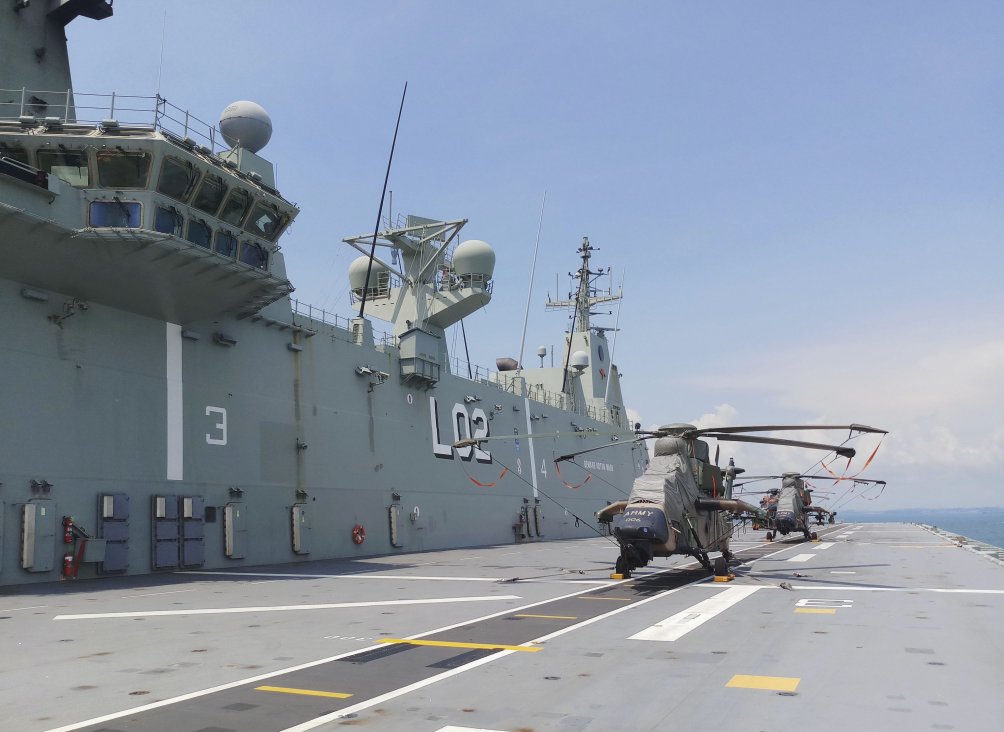
HMAS Canberra seen here while it was berthed at Changi Naval Base, Singapore in 2019. The ship played an instrumental role at FCP20. (Jane’s/Ridzwan Rahmat)
The Royal Australian Navy (RAN) has further validated its ability to conduct mid-intensity, high-end warfighting operations with the completion of Fleet Certification Period 2020 (FCP20) on 6 March.
The naval drills were conducted over three weeks off the coasts of Victoria and Tasmania, and tested the service’s ability to conduct warfighting operations that are centred around its Canberra-class amphibious assault ships.
The amphibious vessel that was deployed for FCP20 was first-of-class HMAS Canberra . It joined the Anzac-class frigates HMAS Stuart and HMAS Arunta , replenishment oiler HMAS Sirius , mine-countermeasure vessels HMAS Huon and HMAS Diamantina , and Collins-class submarines, HMAS Collins and HMAS Farncomb .
A Royal Australian Air Force (RAAF) P-8A aircraft, a United States Navy (USN) P-8, and a Royal New Zealand Air Force (RNZAF) P-3 also took part in FCP20.
Exercises that were conducted as part of the drills included anti-submarine, and anti-air scenarios.
The service’s first-of-class air warfare destroyer (AWD), HMAS Hobart , also joined the task group to provide air-defence support operations. It was the first time that an AWD had participated in a Fleet Certification Period activity.
In comments carried by RAN official publication Navy Daily on 11 March, Commodore Flotillas, Commodore Michael Harris, described the completion of FCP20 as proof that the RAN can deploy in whatever capacity required of it from the Australian government.
Looking to read the full article?
Gain unlimited access to Janes news and more...




